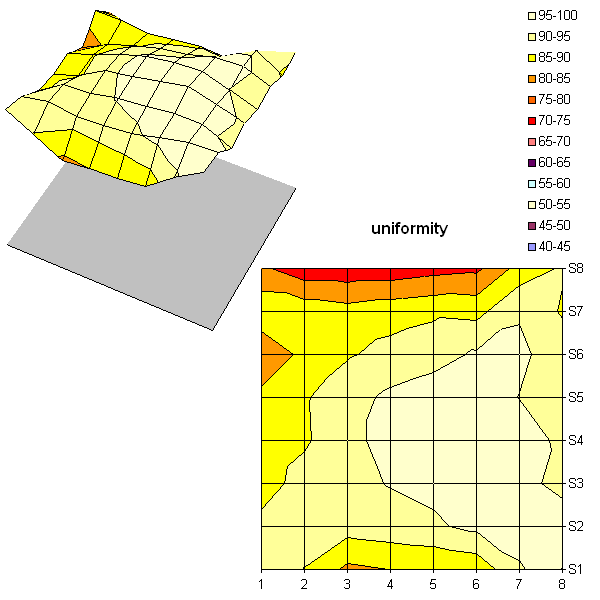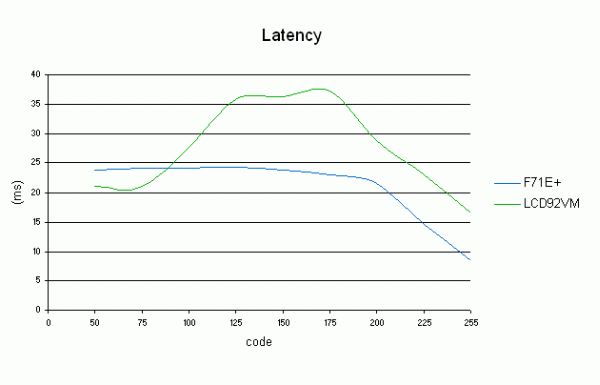Can 19" LCDs Pass the Frag Test?
Spatial Uniformity

The panel's uniformity is far from exceptional, with values differing by a maximum of more than 20%. In addition, the lower part of the image is clearly brighter than the upper part. This poses a disadvantage for the LCD92VM, whose viewing angles are much narrower, as is typical of a TN matrix. You can see a halo on the black bands above and below the image when screening films, for example.
In short, the LCD92VM has no really outstanding characteristics in static use. But its performance is acceptable and well within the average of what's available.
Accusync LCD92VM's Conservative Responsiveness Claims
The panel used in the LCD92VM is an AU Optronics M190EN4, whose specifications claim a response time of 12ms. However, NEC only claims 16ms. That's a wise decision in the light of our test results.

Because in fact the panel achieved response times of 16ms at best. That's still a very decent reading. But as you can see, 19" monitors are still far from being able to compete with 17" units in terms of latency, and our 8ms BenQ is still tops in that area. However, if you compare these latency readings to those of PVA/MVA panels, you can see that progress has been made. Fast 19" LCD monitors are finally a reality. This panel's maximum latency is over 35 ms, but some 16ms 17" displays don't do any better and yet are very playable.
Stay on the Cutting Edge
Join the experts who read Tom's Hardware for the inside track on enthusiast PC tech news — and have for over 25 years. We'll send breaking news and in-depth reviews of CPUs, GPUs, AI, maker hardware and more straight to your inbox.
Current page: Spatial Uniformity
Prev Page NEC's Accusync LCD92VM: Acceptable Color Rendering Next Page In PracticeMost Popular

